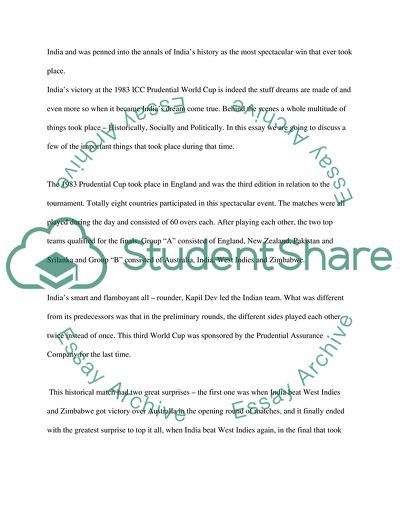Cite this document
(The 1983 Cricket World Cup Literature review Example | Topics and Well Written Essays - 2000 words, n.d.)
The 1983 Cricket World Cup Literature review Example | Topics and Well Written Essays - 2000 words. Retrieved from https://studentshare.org/history/1710511-india-won-cricket-world-cup-in-1983
The 1983 Cricket World Cup Literature review Example | Topics and Well Written Essays - 2000 words. Retrieved from https://studentshare.org/history/1710511-india-won-cricket-world-cup-in-1983
(The 1983 Cricket World Cup Literature Review Example | Topics and Well Written Essays - 2000 Words)
The 1983 Cricket World Cup Literature Review Example | Topics and Well Written Essays - 2000 Words. https://studentshare.org/history/1710511-india-won-cricket-world-cup-in-1983.
The 1983 Cricket World Cup Literature Review Example | Topics and Well Written Essays - 2000 Words. https://studentshare.org/history/1710511-india-won-cricket-world-cup-in-1983.
“The 1983 Cricket World Cup Literature Review Example | Topics and Well Written Essays - 2000 Words”. https://studentshare.org/history/1710511-india-won-cricket-world-cup-in-1983.


